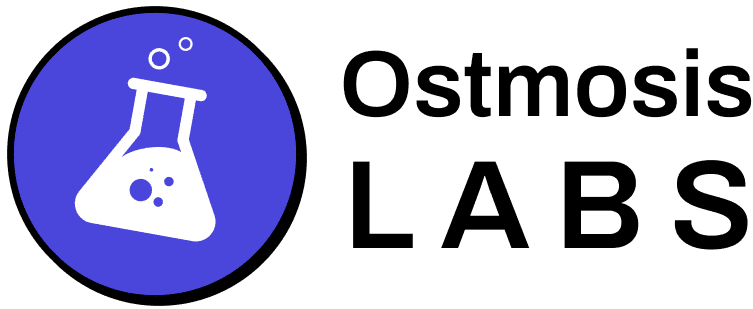Crafting a strong online presence is no longer a luxury but a critical necessity for businesses in our digital age. At the heart of this journey is a practice that often goes unnoticed – website maintenance. An effective website maintenance plan is as essential as the website itself.
With regular web maintenance, you’re not just maintaining your website; you’re enriching the user experience, ensuring your website content remains fresh, and safeguarding your online presence. A comprehensive website maintenance package by Ostmosis Labs covers everything, from server maintenance performed on a monthly basis to regular adjustments that keep your website performing at its peak, ensuring it meets the evolving needs of your audience. Yet, underinvesting in maintenance can have a steep price.
Are you curious about the key components of an optimal web maintenance plan? Let’s dive in!
1. Website Maintenance Plan: Regular Content Updates
In web maintenance, fresh content plays an important role in keeping your website alive, vibrant, and relevant.
- Importance of Adding Fresh Content: Constantly weaving fresh content into your site, such as new product descriptions, blog posts, or updated customer testimonials, keeps market competitiveness. With Ostmosis Lab’s monthly website maintenance services, your website content receives the updates it needs to stay accurate and engaging.
- Impact on User Experience and SEO: Not only does fresh content improve user experience by offering return visitors something new to consume, but it also keeps the algorithm’s side. Search engines reward sites that regularly update content by ranking them higher in search results.
To conclude, regular content updates, part of a robust web maintenance plan, can significantly enhance your website’s effectiveness and online visibility.
2. SEO Maintenance
A critical component of a comprehensive website maintenance plan is SEO Maintenance. Optimizing your website’s Search Engine Optimization (SEO) ensures maximum visibility and keeps your site ranking high in search results. Two main aspects of SEO Maintenance are:
- Continuous Keyword Research: Stay ahead in the highly competitive online environment with ongoing keyword research. Identify and target effective new keywords to keep your website up-to-date and relevant to your audience.
- On-Page SEO and Link-Building Strategies: Enhance website performance with regular updates to on-page SEO factors, such as metadata, headings, and image optimizations. Incorporate link-building strategies to improve your site’s authority and generate valuable traffic.

Including SEO Maintenance in your website maintenance plan will ensure that your website consistently attracts more visitors and maintains strong search engine rankings.
3. Performance Monitoring
Performance Monitoring is a key component of any effective website maintenance plan. Regular monitoring can highlight areas needing improvement, identify potential issues before they become problems, and ensure an optimal user experience.
- Use of Performance Metrics: Metrics like page loading time, bounce rate, and user sessions can provide actionable insights into the health of your website. Regular assessment of these metrics helps keep your website performing seamlessly and meeting your audience’s expectations.
- Tools for Web Analytics: Employing web analytics tools, such as Google Analytics, can aid in tracking user behavior, identifying high-performing content, and monitoring traffic patterns.
Robust performance monitoring is a must-have in any comprehensive web maintenance package to ensure that your website’s performance matches your customers’ expectations and your business objectives.
4. Security Updates
Nothing erodes customer trust faster than a website security breach. In your Security Updates routine maintenance, prioritize two crucial tasks to keep your website secure:
- Regular Updates of CMS, Themes, and Plugins: Frequent website updates are pivotal to site maintenance. Regularly update your CMS, themes, and plugins to close security gaps and protect your site against cyber threats.
- Implementation of SSL Certificates: SSL certificates provide a secure connection between your website and its users, ensuring data integrity and protecting user information. Make sure your website is SSL-certified for worry-free user experiences.

A secure website is not just an option but a necessity in today’s digital landscape. Ensure your monthly website maintenance plan includes robust security updates to keep your online presence safe and trustworthy.
5. Backup Regularity
Our next step in designing a robust Website Maintenance Plan is Backup Regularity. Consistent and frequent backups are the backbone of any website maintenance service, ensuring resilience and quick recovery in case of emergencies.
- Importance of Frequent Backups: Having frequent backups for your website content is a safety net in the unpredictable online landscape. Regular backup means you’ll never lose your content entirely, no matter what happens.
- Recovery in Case of Emergencies: From server failures to cyber-attacks, emergencies are inevitable. They can wreak havoc on your site’s functioning, but with a regular backup schedule, you can restore your web presence promptly.
Setting a regular backup schedule should be a key part of your monthly website maintenance package, ensuring continuity in case the unexpected happens.
6. Compliance Reviews
A pivotal but often overlooked component in a website maintenance plan is Compliance Reviews. Ensure that your website aligns with the ever-changing legal regulations to avoid complications.
- Conformity with Legal Regulations: Regular website audits should include a compliance review to ensure all website practices adhere to local, national, and international laws. These could range from data privacy acts to accessibility guidelines.
- Consequences of Non-Compliant Practices: Non-compliance risks your company’s reputation, can result in costly lawsuits, and cause significant damage to your brand’s image.
Incorporating compliance reviews into your routine maintenance can save your company from unwanted headaches. Use an up-to-date checklist, avoid outdated practices, and make sure your monthly website maintenance plan includes resources to help your website comply with all legal regulations.
7. User Experience (UX) Testing
Next in your website maintenance plan is User Experience (UX) Testing. Remember, a website that isn’t user-friendly is like a store with a locked door.
- Importance of Website User-Friendliness: Your website needs to offer an exceptional user experience. Regular maintenance should include testing your website’s navigation, page load time, and overall functionality to detect and resolve any hiccups.
- Impact on Navigation, Page Load Time, and Overall User Experience: Each of these elements can significantly impact your users’ experience. Slow load times can frustrate users and lead to higher bounce rates.

Incorporate UX testing into your monthly website maintenance to ensure your website provides a seamless and enjoyable experience for all users.
8. Broken Links And Bug Fixes
Broken Links and Bug Fixes comprise an essential piece of your website maintenance plan. They’re like potholes on a highway that need immediate fixing for a smooth ride.
- Issues caused by Broken Links and Bugs: Nothing breaks user trust and disrupts website functioning faster than broken links and bugs. They cause annoyance, lead to poor user experience, and can negatively impact SEO.
- Regular Checks and Prompt Resolution: A regular website maintenance routine should include scanning the website for these issues frequently to ensure that your website is always in tip-top condition.
Remember, broken links and bugs can break your website’s credibility. Include a mechanism for regular checks and fixes in your maintenance plan to keep your website running smoothly. Avoid the potholes, and enjoy the ride!
9. Website Speed Optimization
Achieve lightning-fast results with Website Speed Optimization. Don’t let sluggish performance slow your website traffic down.
- Influence of Page Loading Time on Bounce Rates: A slow-loading website leads to high bounce rates, poor user experience, and lowered search engine rankings.
- Speed Optimization Methods: Your website maintenance plan needs to prioritize optimizations such as caching, image compression, and script minimization.
Incorporate speed optimization in your regular maintenance process to ensure your website stays agile. Keep in mind that a fast-loading website is crucial for retaining visitors and making a great first impression online. Stay speedy, stay ahead!
10. Compatibility Checks
Add Compatibility Checks to your website maintenance plan, ensuring your virtual storefront looks its best on every device and browser.
- Need for Proper Rendering Across Browsers and Devices: Users should experience the same user-friendly interface, regardless of their device or browser. Regular website checks ensure that your website indeed presents the same face to all.
- Regular Checks for Consistent User Experience: Consistency is key in maintaining your online presence that connects to all users seamlessly.
A well-maintained website secures leads, nurtures relationships, and essentially keeps your business in business. Always remember website maintenance is not reactive; it’s proactive. Don’t wait for your website to break. Keep it up-to-date, secure, user-friendly, and, above all, running smoothly.


